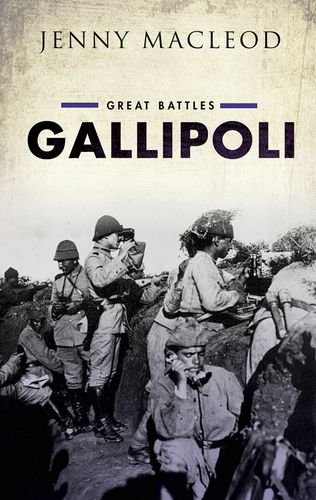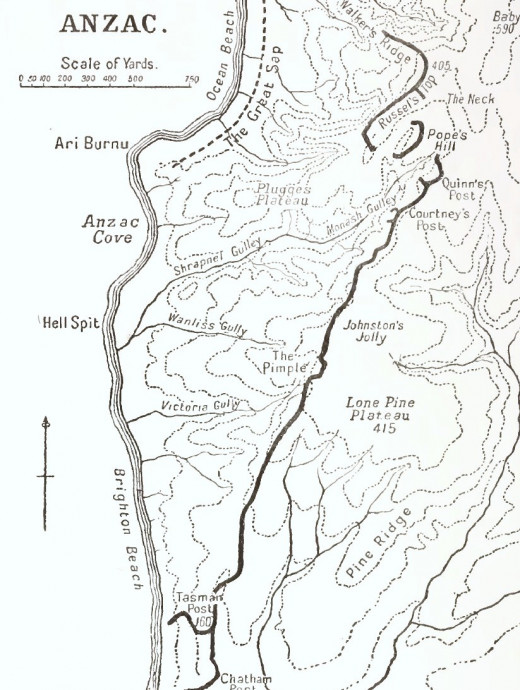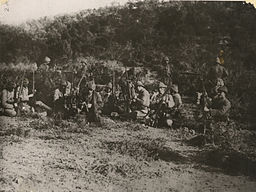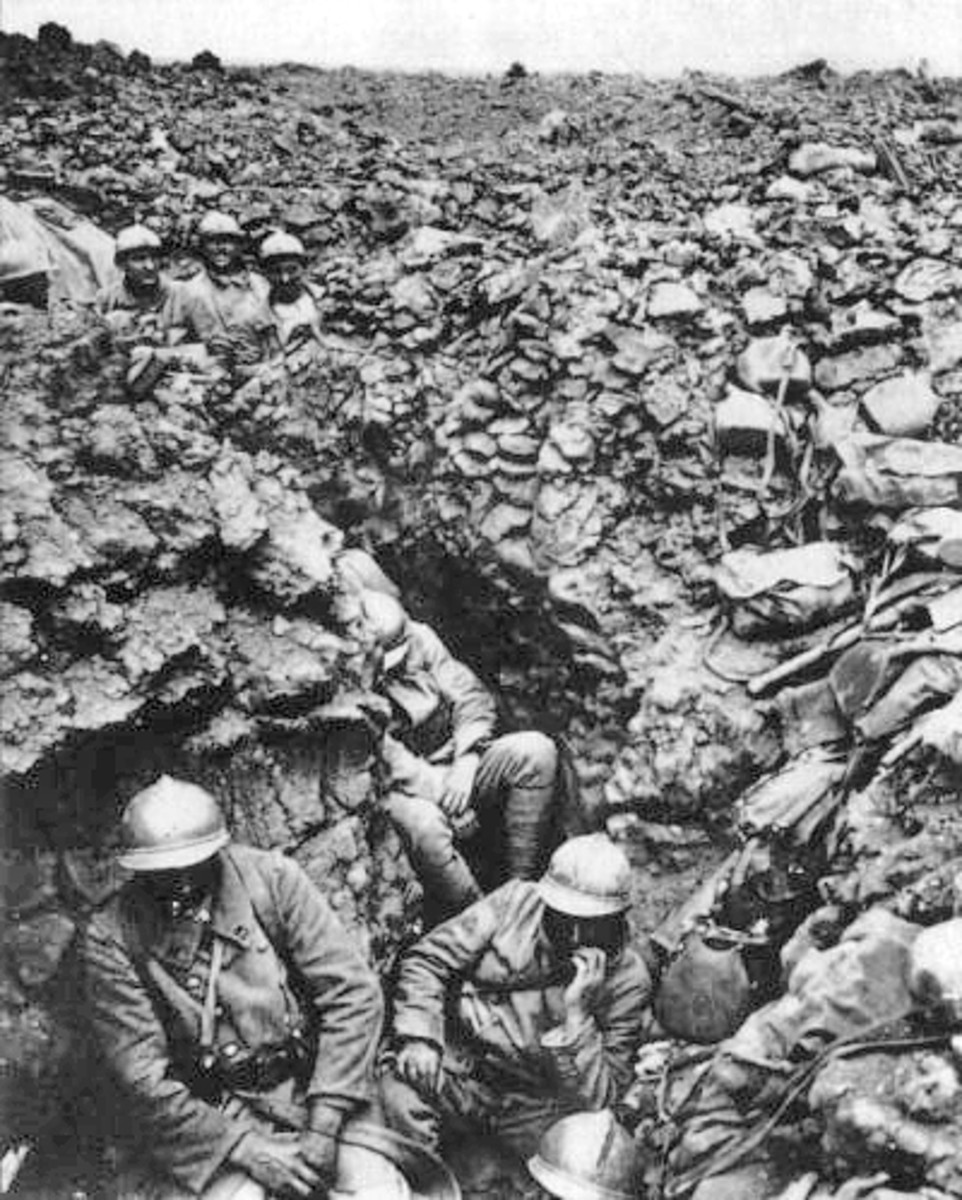Gallipoli Campaign: A Century of Perspectives

(Note: This review is from a pre-publication galley sent to me by Oxford University Press in consideration for my honest review.)
The Dardanelles is a narrow strait connecting the Aegean Sea to the Sea of Marmara. 61 kilometres (38 mi) long and only
1.2 to 6 kilometres (0.75 to 3.73 mi) wide, flanked by fortresses on the Gallipoli peninsula and the mainland. The objective was to reach Istanbul, force Ottoman capitulation and open the Bosphorus Strait to the Black Sea as a warm water supply line to the Russian ally.
I don’t order you to fight, I order you to die. In the time it takes us to die, other troops and commanders can come and take our places.
—Mustafa Kemal
The Gallipoli Campaign (also referred to as the Dardanelles Campaign or the Battle ofÇanakkale)celebrates its 100-year anniversary in 2015. With GALLIPOLI CAMPAIGN: GREAT BATTLES SERIES , author Jenny Macleod gives the reader a solid account of the important individual clashes and the strategies involved, along with an overview of the events that led up to the failed assault on the Gallipoli Peninsula. But the book is as much or more about the remembrance of this campaign by the many countries involved and the remarkable influence it has had on each over the course of the last century.
The book begins with a detailed account of the fundamental details of the nine-month campaign (April, 1915-January, 1916), and the disastrous Naval attempt to force passage through the Dardanelles Strait in February and March of that year. The Dardanelles is a narrow strait connecting the Aegean Sea to the Sea of Marmara. 61 kilometers (38 mi) long and only 1.2 to 6 kilometers (0.75 to 3.73 mi) wide. The waters were strewn with mines and flanked by artillery equipt fortresses on both the Gallipoli peninsula and mainland coasts. The objective was to reach Constantinople (Istanbul), force Ottoman capitulation and open the Bosphorus Strait to the Black Sea as a warm water supply line to the Russian ally. Author MacLeod lays out well the overall objectives and strategies involved. the First Lord of the British Admiralty, Winston Churchill pushed through the commencement of the naval operation at the later cost of his position. Brittish command of the invasion also is taken to task for poor pre-planning, lack of communication, re-supply failures, etc.
While MacLeod acknowledges the poor execution by the British side, the solid defense of the Ottomans, and the heroism on both sides, she concludes that the Allied operation had a very slim chance of success.
While the book describes the actual conflict, its equal purpose is to analyze its historical legacy, primarily in England, Turkey, Australia and New Zealand.
The acronym ANZAC stands for Australian and New Zealand Army Corps. Anzac Day is April 25th of each year to honor the war dead of Australia and New Zealand. It commemorates the dawn landings on the Gallipoli Peninsula the initiated the campaign. Anzac Day ceremonies are held each year in at least seventeen countries. The name “Anzac Cove” was officially recognized by the Turkish government on April 25, 1985. It was the landing point of the Australian and New Zealand troops and became their base until the later evacuation of Allied troops in January of 1916. Anzac Day ceremonies start with the solemn Dawn Service. The public sentiments of Anzac Day, the Gallipoli campaign and of war and nationalism in general in different countries and in different eras is examined in depth.
The Allied casualties included an estimated 21,255 dead, 52,230 wounded from Great Britain and Ireland,10,000 dead, 17,000 wounded from France, 8,709/18,441 from Australia, 2,779///5,212 from New Zealand, 49///93 from Newfoundland, and 1,358///3,421 from British India. Ottoman Empire casualties have been estimated at 86,692 dead, 164,617 wounded. Total casualties during the campaign are estimated at 392,856, of which 130,842 were mortalities.
The British Empire was augmented by the French, including troops from French West Africa, Algeria and the Foreign Legion. The British force combined troops from England, Scotland, Ireland, Wales, Australia, New Zealand, India, Newfoundland, Ceylon, and the Zion Mule Corps. The latter was a 562 man unit sent to the battle a mere month after being recruited in Egypt following their deportation from the Ottoman Empire the previous year. Their role was to transport vital water and ammunition supplies to the forward combatants.
On the Ottoman side, the overall defense strategy is praised as solid. Much emphasis is on the brilliant leadership of Lieutenant Colonel Mustafa Kemal Atatürk. He gained first fame during the war and eventually led the struggle in the Turkish War of Independence. Kemal is considered the founding father of the Republic of Turkey and was its first President.
If I have a quibble with Gallipoli: Great Battles Series it's with the title. I think the cover is misleading in that it ignores the great focus put on post-Gallipoli events and sentiments in relation to the campaign. That said, I believe the objective of the book, and the entire series, is a worthy endeavour. And I believe MacLeod achieved that objective.
Gallipoli is the third book in the new Great Battles Series published by Oxford University Press. Each work combines an overview of the battle, along with the historical after effects on society.
Map of Anzac landing area, Gallipoli, 25 April 1915



Product Details
Hardcover and Kindle editions
- Series: Great Battles
- Hardcover: 256 pages
- File size: 6224 KB
- Publisher: Oxford University Press; 1 edition (October 1, 2015)
- Language: English
- ISBN-10: 019964487X
- ISBN-13: 978-0199644872
ANZAC DAY 2015 Gallipoli Dawn service
© 2015 Gary Malmberg








